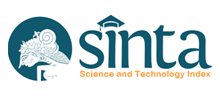Keywords
science news articles, framing, news media functions, politicization
Document Type
Article
Abstract
This century has necessitated scholars to probe the credence of science in the news reportage of the Covid-19 pandemic. Therefore, this paper aims to establish the locus of science as treated by CNN against the backdrop of this global health crisis. Using Nisbet's (2009) typology as the new paradigm in public engagement as informed by content analysis, this paper argues that CNN Philippines' news articles are mostly framed as scientific/technical uncertainty which holds science with the highest esteem in decision-making, but it also disregards its authority for political reasons. As guided by Yanovitzky and Weber (2019), this paper also articulates that the functions of CNN as a news media organization in the reportage of science are mobilization and awareness which provoke action among policy actors through relevant information. Further, this paper offers a perceptive look into an emerging dimension for science communication scholars: the gulf between science and politics which surfaces the politicization of key pandemic decisions.
First Page
39
Last Page
54
Page Range
39-54
Issue
1
Volume
53
Digital Object Identifier (DOI)
10.21831/informasi.v53i1.56692
Source
56692
Recommended Citation
Collo, E. C. (2023). Framing science in the time of Covid-19 pandemic: Lessons from CNN Philippines' reportage. Informasi, 53(1), 39-54. https://doi.org/10.21831/informasi.v53i1.56692
References
Abad, M. (2020, April 7). Timeline: The novel coronavirus pandemic. https://www.rappler.com/newsbreak/iq/250842timeline-novel-coronavirus-epidemic.
Acquah-Baidoo, B. (2016). Framing ebola: An analysis of the US and Sierra Leone media. ProQuest Dissertations Publishing.
Bengtsson, M. (2016). How to plan and perform a qualitative study using content analysis. Elsevier, 2. Faculty of Health and Society, Department of Care Science, Malmo University, Sweden.
Bernard, T., & Flitman, A. (2002). Using repertory grid analysis to gather qualitative data for information systems research. ACIS 2002 Proceedings. 98. http://aisel.aisnet.org/acis2002/98.
Blakely, D. (2001). Mass mediated disease: A case study analysis of news reporting and three influenza pandemics and public health policy. ProQuest Dissertations Publishing.
Carter, M. (2013). The hermeneutics of frames and framing: An examination of the media's construction of reality. SAGE Open.
Delgrossi, S., Morales, C., Smith, J., & Uzquiano, K. (2020, December 18). The year of a global pandemic. https://edition.cnn.com/interactive/2020/health/covid19-pandemicvideo-timeline/
Fairhurst, G., & Sarr, R. (1996). The art of framing. Jossey-Bass. https://masscommtheory.com/theoryoverviews/framing-theory/.
Goldsmith, M. (1986). The proper public for science. The Public
Communication of Science: Critical Concepts in Sociology 2016, Vol. III Publics for Science (50), 27-41.
Griffin, E. (2012). A first look at communication theory (8th ed.). McGraw-Hill Education (Asia).
Hiltzik, M. (2020, June 8). How a retracted research paper contaminated global coronavirus research. Los Angeles Times. https://www.latimes.com/business/story/2020-0608/coronavirus-retracted-paper.
Lasco, G. (2020, April 9). COVID-19 and the limits of 'expert knowledge'. https://opinion.inquirer.net/128758/covid-19-and-the-limits-of-expert-knowledge
Laughey, D. (2007). Key themes in media theory. McGraw-Hill. Open University Press.
Li, J. (2016). Framing infectious diseases: A comparative analysis of Chinese news coverage of SARS and Ebola. ProQuest Dissertations Publishing.
Littlejohn, S., & Foss, K. (2009). Encyclopedia of communication theories. SAGE.
Macnamara, J. (2005). Media content analysis: Its uses, benefits, and best uses methodology. https://www.researchgate.net/publication/267387325_Media_Content_ Analysis_Its_Uses_Benefits_and_Best_Practice_Methodology
Mahbubani, R., MacFall-Johnsen, M., & Baker, S. (2020). Coronavirus live updates: Nearly 418,000 have been infected worldwide, 18,600-plus are dead, and the US is the third-worst-hit country. https://www.businessinsider.com/china-virus-everything-we-knowdeadly-2019-ncov-wuhan-spread-2020-1
McCombs, M. (2004). Setting the Agenda: The mass media and public opinion. Polity Press.
Meyer, M. (2010). The rise of the knowledge broker. Science Communication, 32 (1), 118-127. https://doi.org/10.1177/1075547009359797
Nicola, M., O'Neill, N., Sohrabi, C., Khan, M., Agha, M., & Agha, R. (2020). Evidence-based management guideline for the COVID-19 pandemic - review article. International Journal of Surgery, 77, 206-216.
Nisbet, M. (2009). Framing science: A new paradigm in public engagement. School of Communication, American University.
Paneta, G. (2019). These are the most and least trusted news outlets in the US. https://www.businessinsider.com/most-and-leasttrusted-news-outlets-in-america-cnn-fox-news-new-york-times-2019 4?fbclid=IwAR0QqAJ6RlCegKMVVdFIByR6JLZWlEKNqA_mlfHvTg6_itx0b r51oVnfaec
Scheufele, D. (1999). Framing as a theory of media effects. Journal of Communication 49 (4): 103-22.
Sneader, K., & Singhal S. (2020, March 23). Beyond coronavirus: The path to the next normal. https://www.mckinsey.com/industries/healthcare-systems-andservices/our-insights/beyond-coronavirus-the-path-to-the-next-normal
Shelburne, R. (2002). Framing the reality of aids: An analysis of the presentation of aids in the mainstream and gay press. ProQuest Dissertations Publishing.
Sohrabi, C., Alsafi, Z., O'Neill, N., Khan, M., Kerwan, A., Al-Jabir, A., Iosifidis, C., & Agha, R. (2020). World Health Organization declares global emergency: A review of the 2019 novel coronavirus (COVID-19). International Journal of Surgery, 76, 71-76. https://opinion.inquirer.net/128758/covid-19-and-the-limits-of-expert-knowledge
Sokolova, E. (2016). State response to the HIV/AIDS epidemic in Russia: Institutional factors. ProQuest Dissertations Publishing.
Tweeten, L., Barone, E., & Wolfson, E. (2020). A timeline of how the Wuhan coronavirus has spread"”and how the world has reacted. https://time.com/5774366/how-coronavirus-spread-china/
United Nations Office for Risk Reduction. (2017). Words into action guidelines: National disaster risk assessment special topics. https://www.preventionweb.net/files/52828_apubliccommunication[1] .pdf
Wilson, R. (2020, April 4). WHO says US hasn't shared any evidence linking coronavirus to Chinese lab. The Hill. https://thehill.com/policy/healthcare/public-global-health/495983who-says-us-hasnt-shared-any-evidence-linking
Yanovitzky, I., & Weber, M. (2019). News media as knowledge brokers in public policymaking processes. Communication Theory 29, 191- 212.

